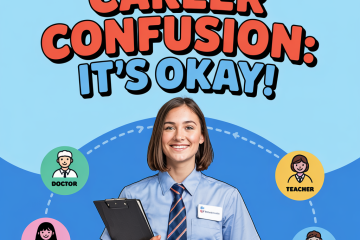Reverse Engineering Your Dream Career: Identifying Skills & Experiences Needed NOW

Thinking about your future career can feel overwhelming. Where do you even start? One powerful approach is career planning backwards, sometimes called “reverse engineering” your career. Instead of just figuring out the next immediate step, you start by envisioning your long-term goal and then work backward to identify the skills for future job success and the experiences you need to gain now, during high school and college. This strategy helps with setting career goals early. This strategy helps with setting career goals early, and platforms like Cirkled In can assist in showcasing your achievements along the way.
Thinking About the Future: Start with the End in Mind
It’s okay if you don’t have your entire life mapped out! But having a general idea of the type of work you might enjoy or the impact you want to make provides a target. Reverse engineer career path planning helps turn vague dreams into actionable steps.
What is Reverse Engineering Your Career?
It means:
- Defining a potential long-term career goal or field.
- Researching what qualifications, skills, and experiences are typically needed to reach that goal.
- Working backward to figure out what steps you need to take in college, and even in high school, to acquire those qualifications.
It’s a strategic thinking approach to career development.
Step 1: Identify Your Long-Term Career Vision (Even if Vague)
- What kind of work excites you? (Helping people? Solving problems? Creating things? Working with tech?)
- What impact do you want to have?
- What kind of work environment do you imagine?
- Are there specific job titles or industries that intrigue you (e.g., doctor, software engineer, journalist, environmental scientist)?
It’s okay if this vision changes later! Just pick a starting point.
Step 2: Research Roles and Required Qualifications
Once you have a target (even a broad one), start researching:
- Job Descriptions: Look up job postings for roles that interest you on sites like LinkedIn or Indeed. What qualifications do they list? (Degrees, specific skills, years of experience).
- Career Profiles: Read online career profiles (like on the Bureau of Labor Statistics OOH website) or watch “day in the life” videos.
- Informational Interviews: Talk to people currently working in those roles. Ask them about their career path and what skills/experiences were most important.
- Educational Requirements: What degrees are typically required? Are advanced degrees (Master’s, PhD) necessary? What majors are common?
Step 3: Map Out Key Milestones (College, Early Jobs)
Based on your research, what are the typical stepping stones?
- College: What major(s) align best? Does the choice of college matter (e.g., specific program reputation)?
- Internships: Are internships expected or required in this field during college?
- Graduate School: Is it needed? If so, what kind and when?
- Entry-Level Jobs: What kinds of first jobs do people usually get in this field?
Step 4: Identify Necessary Skills and Experiences
Work backward from the job requirements. What skills and experiences do you need to build before you get there?
- Hard Skills: Specific technical abilities (e.g., coding languages, lab techniques, software proficiency, data analysis).
- Soft Skills: Communication, teamwork, problem-solving, leadership, adaptability.
- Experiences: Research, internships, relevant projects, volunteer work, leadership roles in clubs.
This involves strategic skill development, and platforms like Cirkled In can help you track and showcase these experiences.
Step 5: Plan Your High School & College Years Strategically
Now, connect those needed skills/experiences to your current stage:
- High School:
- Choose relevant coursework (AP, IB, electives).
- Join related clubs or activities.
- Seek out volunteer or part-time job opportunities.
- Start working on foundational skills (writing, communication). This is crucial high school career planning.
- College:
- Select appropriate major(s) and minors.
- Actively seek internships and research opportunities.
- Take courses that build specific hard and soft skills.
- Network with professors and professionals.
- Take on leadership roles.
Align your current choices with your long-term vision.
Flexibility is Still Key
Reverse engineering provides a roadmap, not a rigid set of tracks.
- Be Open to Change: Your interests and goals may shift – that’s normal! Re-evaluate and adjust your plan as needed.
- Explore Detours: Unexpected opportunities or interests might arise. Don’t be afraid to explore them.
- Focus on Transferable Skills: Skills like communication, problem-solving, and adaptability are valuable regardless of your final career path.
Final Thought: Plan Backwards, Move Forward
Career planning backwards is a powerful strategy for making your high school and college years more purposeful. By starting with a potential end goal and working backward to identify the necessary steps, skills, and experiences, you can make more informed decisions now. This reverse engineer career path approach helps turn future aspirations into a concrete plan of action, setting you up for greater success.
Need more tips on college applications, scholarships, or just how to survive this whole process? Cirkled In has your back—check out Cirkled In resources to help you through every step of your college journey!Check out Cirkled In and start owning your future today!



0 Comments